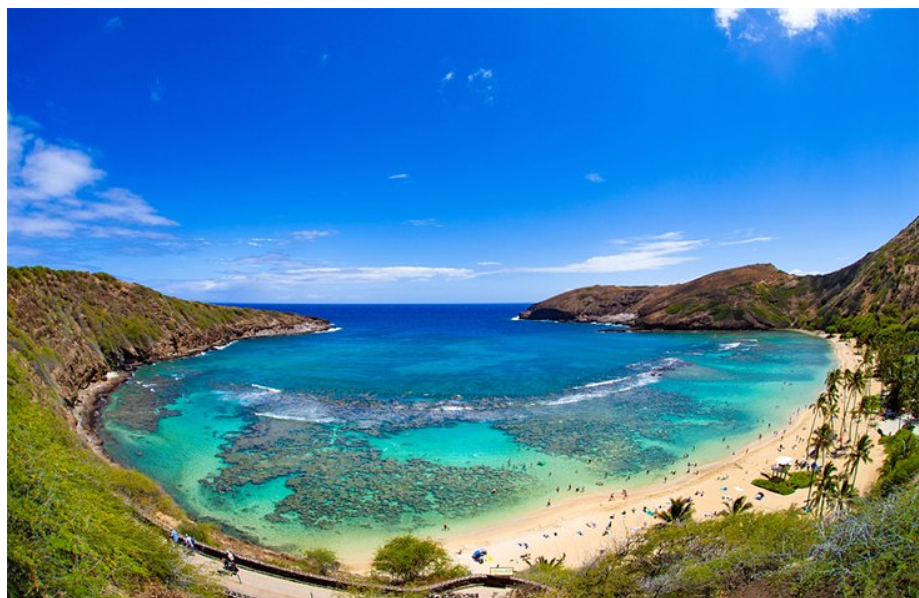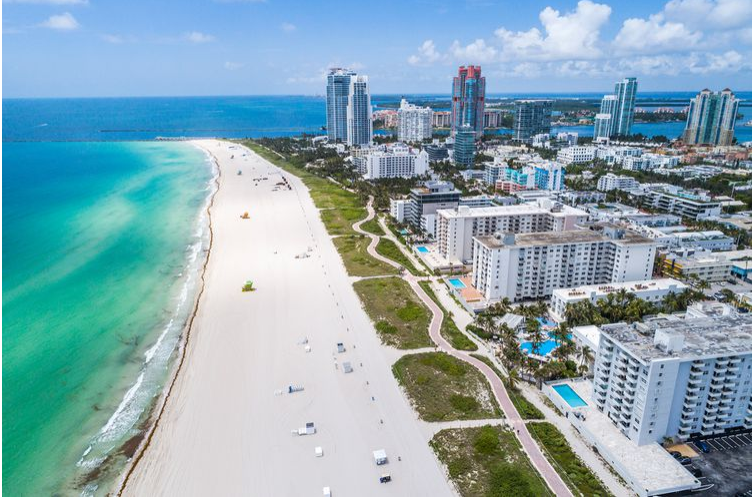Hawaii Travel News / August 7, 2025
Origin Article: here
It started with a proposed fleet of sleek, semi-submersible vessels with air-conditioned cabins and panoramic underwater views. That resulted in contracts with Disney, Carnival, and Norwegian Cruise Line. A hundred-million-dollar opportunity, pitched in the heart of Hawaii’s popular ocean tourism industry. It all sounded just close enough to being real.
But none of it was. What started as a glossy fantasy ended in federal court. Nearly $29 million was gone. A Hawaii couple was convicted and sentenced. And the so-called submarine, a surface vessel with underwater viewing windows, never went anywhere near underwater.
A real submarine history in Hawaii.
Underwater tourism isn’t new in Hawaii. Atlantis Submarines began operations here in 1988 and, by 1991, was running battery-powered vessels in Kona, Oahu, and Maui — a business that continues today.
These were real submarines conducting real dives, with a focus on safety, education, and reef conservation. They are Coast Guard certified and operate under their own power, are battery-powered (no fuel discharge), and descend to 100–150 feet below the surface on every tour. Passengers are inside a pressurized, enclosed cabin with large viewports, not in a semi-submersible or glass-bottom boat.
Atlantis has carried more than 18 million people on over half a million dives. Its biggest vessel, the Atlantis XIV, runs off Waikiki, seats 64, and is, by the company’s count, the largest passenger submarine in the world. Atlantis still runs tours on Oahu and the Big Island. Maui is paused.
Waikiki tours start with a shuttle boat ride from their dock near Hilton Hawaiian Village, followed by about 45 minutes underwater. Passengers may see coral, tropical fish, turtles, and artificial reefs made from sunken ships and planes. The subs are Coast Guard certified, and narration plays in multiple languages.
Atlantis pitches its tours as educational, sustainable, and family-friendly. The battery system avoids fuel discharge, and routes are chosen to protect reefs. It’s one of Hawaii’s most durable and regulated ocean experiences, which makes the Semisub scheme look even more empty by comparison.
The Semisub fantasy that failed.
Semisub Inc. tried to borrow from the Atlantis playbook, at least on paper. Its promotional materials offered up glossy renderings of sleek, next-gen vessels outfitted with luxury seating, oversized underwater windows, and the promise of a world-class experience.
The pitch name-dropped major cruise lines, cited Coast Guard approvals, and claimed that sea trials were already underway. The brochures looked polished. The website was confident. But according to prosecutors, none of it was true.
Behind the scenes, court records show the couple was using investor money for personal travel, inflated salaries, and day-to-day expenses. They created fake invoices and invented correspondence to back their story. At one point, they even pointed to fabricated letters of intent from cruise companies as justification for raising more cash.
There were no shipyards, no subs under construction, no contracts in motion. Just the illusion of momentum, built on borrowed legitimacy from Hawaii’s long-standing ocean tourism industry. By echoing the look and language of real operators like Atlantis, the project looked just credible enough to fool people.
Investors bought into the dream. Hawaii clearly sells underwater magic well, and Semisub leaned hard into that. The setting, the story, and the visual appeal all worked together until they didn’t. Then the project unraveled only after a federal investigation exposed just how much of it had been smoke, mirrors, and marketing.
The photo, the former governor, and the fantasy.
One of the stranger turns in the Semisub fraud trial came when former Governor David Ige took the stand. Prosecutors said Curtiss Jackson had told investors he was close with Ige and had his backing.
That story didn’t hold up. Ige said he had never heard of Semisub One and didn’t know Jackson. The defense showed a photo from Ige’s 2014 inaugural ball, which Jackson had used in marketing. Ige shrugged it off.
Representing himself, Jackson asked if Ige remembered dancing with his wife, being on her Facebook page, or sitting two tables away. Ige didn’t. Then Jackson asked if he was seeing a doctor for memory problems. The courtroom reaction to that was somewhere between a wince and a laugh.
The photo was real. The connection wasn’t. But for investors skimming a pitch deck, it may have been enough to be duped.
Investors bought into the dream. Hawaii clearly sells underwater magic well, and Semisub leaned hard into that. The setting, the story, and the visual appeal all worked together until they didn’t. Then the project unraveled only after a federal investigation exposed just how much of it had been smoke, mirrors, and marketing.
The photo, the former governor, and the fantasy.
One of the stranger turns in the Semisub fraud trial came when former Governor David Ige took the stand. Prosecutors said Curtiss Jackson had told investors he was close with Ige and had his backing.
That story didn’t hold up. Ige said he had never heard of Semisub One and didn’t know Jackson. The defense showed a photo from Ige’s 2014 inaugural ball, which Jackson had used in marketing. Ige shrugged it off.
Representing himself, Jackson asked if Ige remembered dancing with his wife, being on her Facebook page, or sitting two tables away. Ige didn’t. Then Jackson asked if he was seeing a doctor for memory problems. The courtroom reaction to that was somewhere between a wince and a laugh.
The photo was real. The connection wasn’t. But for investors skimming a pitch deck, it may have been enough to be duped.
A lesson in image versus infrastructure.
This wasn’t some tourists getting hustled at the dock. It was something quieter, and in a way, more dangerous. The pitch worked because it sounded just close enough to real. Hawaii has reefs, cruise ships, innovation, and a long track record of doing ocean tourism well. A next-gen submarine? Sure, why not.
But when Hawaii gets used as a prop for fantasy ventures, the damage runs deeper than just lost money. It chips away at trust in what’s actually here, and in the people trying to do it right.
The real subs are still out there.
Atlantis Submarines is still running in Hawaii, just not like it used to. Some routes have paused, but off Waikiki and Kona, the battery-powered vessels still take visitors down to see what’s left of the reef. No goggles. No getting wet. Just a slow descent and a window seat on the ocean.
It’s not flashy. It doesn’t promise the world. But it’s real. And for plenty of visitors, that’s enough.
That’s part of what makes the Semisub story so frustrating. The fraud didn’t just take money. It leaned on the real work that others here have been doing for decades. Quiet, careful, and actually underwater.
Check Out some of our other blog articles: Here





